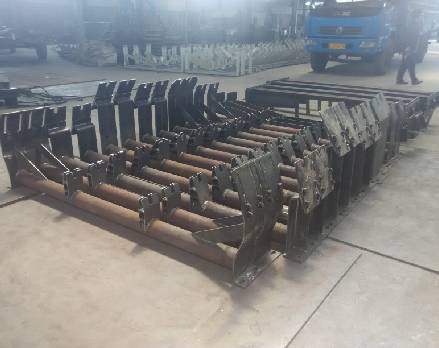 Afrikaans
Afrikaans  Albanian
Albanian  Amharic
Amharic  Arabic
Arabic  Armenian
Armenian  Azerbaijani
Azerbaijani  Basque
Basque  Belarusian
Belarusian  Bengali
Bengali  Bosnian
Bosnian  Bulgarian
Bulgarian  Catalan
Catalan  Cebuano
Cebuano  Corsican
Corsican  Croatian
Croatian  Czech
Czech  Danish
Danish  Dutch
Dutch  English
English  Esperanto
Esperanto  Estonian
Estonian  Finnish
Finnish  French
French  Frisian
Frisian  Galician
Galician  Georgian
Georgian  German
German  Greek
Greek  Gujarati
Gujarati  Haitian Creole
Haitian Creole  hausa
hausa  hawaiian
hawaiian  Hebrew
Hebrew  Hindi
Hindi  Miao
Miao  Hungarian
Hungarian  Icelandic
Icelandic  igbo
igbo  Indonesian
Indonesian  irish
irish  Italian
Italian  Japanese
Japanese  Javanese
Javanese  Kannada
Kannada  kazakh
kazakh  Khmer
Khmer  Rwandese
Rwandese  Korean
Korean  Kurdish
Kurdish  Kyrgyz
Kyrgyz  Lao
Lao  Latin
Latin  Latvian
Latvian  Lithuanian
Lithuanian  Luxembourgish
Luxembourgish  Macedonian
Macedonian  Malgashi
Malgashi  Malay
Malay  Malayalam
Malayalam  Maltese
Maltese  Maori
Maori  Marathi
Marathi  Mongolian
Mongolian  Myanmar
Myanmar  Nepali
Nepali  Norwegian
Norwegian  Norwegian
Norwegian  Occitan
Occitan  Pashto
Pashto  Persian
Persian  Polish
Polish  Portuguese
Portuguese  Punjabi
Punjabi  Romanian
Romanian  Russian
Russian  Samoan
Samoan  Scottish Gaelic
Scottish Gaelic  Serbian
Serbian  Sesotho
Sesotho  Shona
Shona  Sindhi
Sindhi  Sinhala
Sinhala  Slovak
Slovak  Slovenian
Slovenian  Somali
Somali  Spanish
Spanish  Sundanese
Sundanese  Swahili
Swahili  Swedish
Swedish  Tagalog
Tagalog  Tajik
Tajik  Tamil
Tamil  Tatar
Tatar  Telugu
Telugu  Thai
Thai  Turkish
Turkish  Turkmen
Turkmen  Ukrainian
Ukrainian  Urdu
Urdu  Uighur
Uighur  Uzbek
Uzbek  Vietnamese
Vietnamese  Welsh
Welsh  Bantu
Bantu  Yiddish
Yiddish  Yoruba
Yoruba  Zulu
Zulu picking idler
Understanding the Importance of Picking Idler in Mechanical Systems
The picking idler, often an underrated component in mechanical assemblies, plays a crucial role in various applications, particularly in the fields of manufacturing, logistics, and material handling. As a pivotal part of conveyor systems, its design and functionality can significantly influence operational efficiency and equipment longevity.
At its core, a picking idler is designed to support and guide the movement of materials along a conveyor belt. Its primary function is to ensure that products are accurately directed to designated pickup points while minimizing potential disruptions. By effectively stabilizing the movement of items, the picking idler enhances the flow of materials, ensuring that operations remain smooth and efficient.
One of the most significant advantages of a well-designed picking idler is its ability to reduce wear and tear on conveyor belts. When materials are transported, they're subjected to various forces, including friction, gravity, and vibration. An efficient picking idler can help distribute these forces evenly across the conveyor belt, thereby reducing localized stress and prolonging the lifespan of the entire system. As a result, businesses can save on maintenance costs and avoid the disruptive consequences of equipment failure.
Additionally, the picking idler contributes to the safety of the operational environment. In industrial settings, the risk of accidents can be heightened by equipment malfunction or misalignment. A properly functioning picking idler assists in maintaining proper alignment of materials on the conveyor, thereby reducing the likelihood of spills and accidents. This is especially critical in operations where heavy or hazardous materials are involved, as the consequences of misalignment can be severe.
picking idler

The design of the picking idler itself can vary based on the application and the types of materials being handled. A picking idler may incorporate features such as adjustable heights, multiple roller configurations, or specialized coatings to withstand corrosive environments. The choice of materials used in manufacturing the idler can further influence its performance; for instance, using non-corrosive materials can extend the idler's lifespan in damp or chemical-rich environments.
Beyond physical attributes, the efficiency of a picking idler can also be influenced by the integration of technology. Advanced conveyor systems might utilize smart technology, such as sensors and automated controls, to monitor the position and speed of the picking idler in real time. This data can help in optimizing the path of materials and fine-tuning system parameters to ensure maximum productivity. As industries continue to evolve towards automation, the role of the picking idler in such systems becomes even more critical.
Furthermore, training personnel on the significance of picking idlers can lead to improved operational practices. Workers should be made aware of routine inspection processes, which are vital for identifying potential issues before they escalate into costly problems. Regular maintenance checks can include ensuring that the picking idler is properly aligned, that its bearings are lubricated, and that any wear is addressed promptly.
In conclusion, the picking idler may seem like a minor component in the grand scheme of a conveyor system, but its impact cannot be overstated. By ensuring the smooth transport of materials, reducing wear on equipment, enhancing safety, and even integrating advanced technology, the picking idler serves as a backbone for efficient operations in various industries. As businesses continue to seek ways to optimize their processes, recognizing and investing in the critical elements, such as picking idlers, will be key to achieving sustained success. Emphasizing the importance of these seemingly small components can lead to remarkable improvements in overall productivity and reliability in mechanical systems.
-
Revolutionizing Conveyor Reliability with Advanced Rubber Lagging PulleysNewsJul.22,2025
-
Powering Precision and Durability with Expert Manufacturers of Conveyor ComponentsNewsJul.22,2025
-
Optimizing Conveyor Systems with Advanced Conveyor AccessoriesNewsJul.22,2025
-
Maximize Conveyor Efficiency with Quality Conveyor Idler PulleysNewsJul.22,2025
-
Future-Proof Your Conveyor System with High-Performance Polyurethane RollerNewsJul.22,2025
-
Driving Efficiency Forward with Quality Idlers and RollersNewsJul.22,2025





























